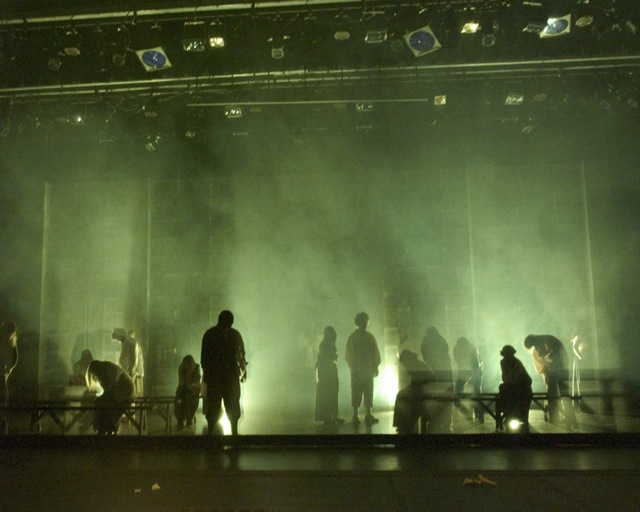
See Scene Changes for more Produce the Cue List If, during a rehearsal, there’s a pause while chairs are rearranged for a scene change, how will that look on stage? How will you ensure that scene changes are fully integrated into the flow of the performance rather than just going to blue backlight and pausing for 20 seconds while crew run around? It’s also important to have a conversation with stage management. The director should let you know of any specific needs (“I’d like a snap blackout here”, “this actor should be isolated”, “I’ll need the whole of this part of the stage to go pink here”) and you should note them also. With the director sitting beside you watch and note actor positions and moves as relevant to the lighting. Many projects may be devised, with no script at the start of the process, so the conversation with the director or creators of the project will help you to get started thinking about what your approach should be. If the performance is in a non-theatre space, or a space with limited installed equipment, you may also need to think about hiring additional equipment, so your palette may be limited by what’s affordable on the show budget. The need is for jargon-free friendly terminology for the other members of the creative team – the director, for example, has no wish to know which equipment you will use to achieve the downstage centre blue special only that there will be one.

If they’re in white (for example), colour and intensity will have a much larger effect than if they’re wearing darker colours. It’s also vital to talk to the costume designer about how the actors will be dressed. The choice of colour, in particular, will have a huge effect on how the set looks, so this conversation is essential. If there’s a scene in the living room of a house at night-time and early morning, that gives you two more elements of the palette to note down.Ī discussion with the set designer willl enable you to work together to ensure that there’s room for your lighting equipment in the rig, and that the set can incorporate any ideas you have, and that the palette of ideas you’re creating will cover the set designers’ ideas and wishes too. If there’s a moment set in a forest, for example, you could note that ‘forest lighting’ will be required.

At this stage, there is no need to think about which lanterns you will use to achieve these looks. You can start by thinking of a palette of looks that are mentioned in the text. Initially, you should think about what the production needs, in very broad terms. Knight of Illumination Winner 2015.Read Script and Discuss with Director and Designers As well as theatre lighting, I have a passion for interior and architectural lighting design and the space it can create. I have an enthusiasm for lighting and the people working in it. Training and developing others are an important part of my skills. I thrive under pressure and have excellent team building and management skills through my experiences of lighting throughout the world. Organisation, budget, time management and working creatively are skills which are my forté. With this I am also studying a diploma managing Health Safety. I am also studying at the moment interior and architectural lighting design as I have a passion for light and the space it can create. Lighting Opera, Ballet, Theatre and musical theatre in the West End and Broadway as well as most major city's.

I have run large lighting departments in regional theatres in the UK and lit productions throughout the world.

I am a lighting designer and have worked in theatre, event and television.


 0 kommentar(er)
0 kommentar(er)
